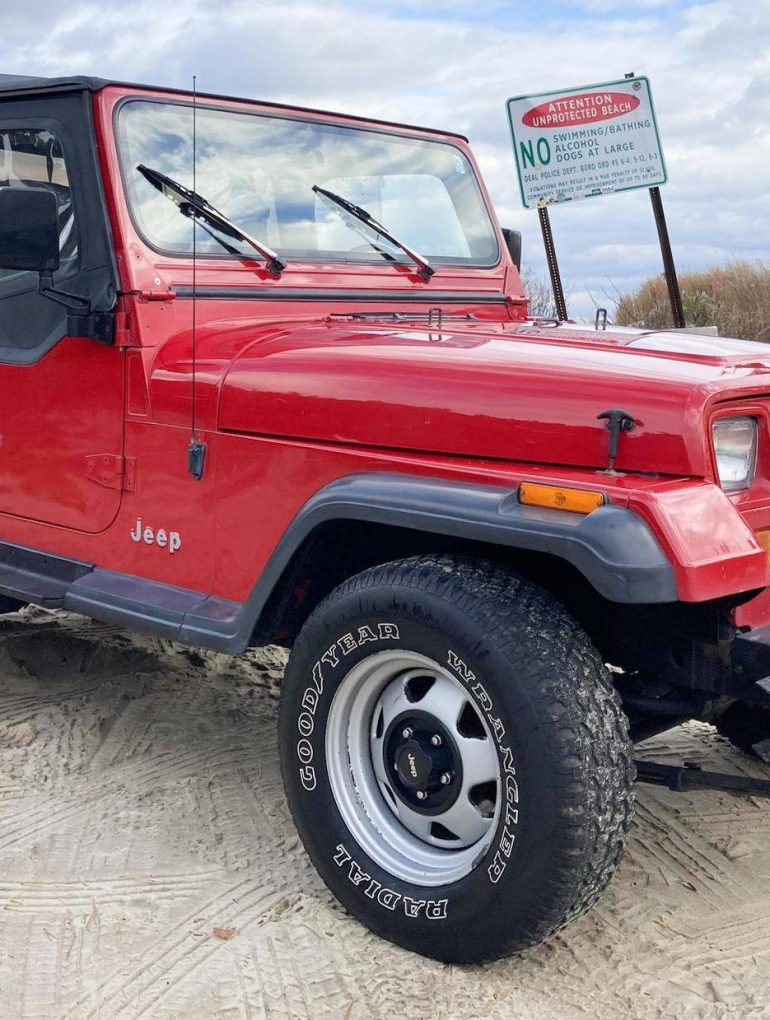The 1991 Jeep Wrangler: A Deeper Dive into an Off-Road Icon
The 1991 Jeep Wrangler, part of the YJ series, represents a significant milestone in the evolution of this iconic off-road vehicle. Building on the success and feedback from previous models, the 1991 Wrangler introduced improvements in performance, comfort, and versatility, further solidifying its status as a favorite among off-road enthusiasts and everyday drivers alike. This article delves into the design, engineering, performance, features, and impact of the 1991 Jeep Wrangler.
Design and Exterior
The 1991 Jeep Wrangler retained the distinctive design elements that defined the YJ series. Its rectangular headlights, a hallmark of the YJ models, set it apart from the earlier CJ series with their traditional round headlights. While initially controversial, this design choice became a defining feature of the YJ Wrangler, symbolizing a new era for the Jeep brand. The seven-slot grille, flat fenders, and boxy shape paid homage to Jeep’s military heritage while offering a more contemporary look.
The body-on-frame construction of the 1991 Wrangler ensured durability and strength, essential for off-road adventures. The removable doors and fold-down windshield allowed for an open-air driving experience, a beloved feature among Jeep enthusiasts. The 1991 model offered various top options, including a hardtop, soft top, and bikini top, catering to different preferences and weather conditions.
Interior and Comfort
Inside, the 1991 Jeep Wrangler focused on enhancing comfort and practicality while maintaining its rugged charm. The interior was designed with functionality in mind, featuring ergonomic seating that provided better support for both on-road and off-road journeys. The dashboard layout was straightforward and user-friendly, with easy-to-read gauges and accessible controls. Despite its utilitarian nature, the Wrangler’s interior included convenient storage options such as a center console, door pockets, and improved climate control.
The 1991 model continued to offer a rear seat option, making the Wrangler more versatile and capable of accommodating up to four passengers. The rear seat could be folded down or removed entirely, providing additional cargo space when needed. This flexibility made the Wrangler suitable for a wide range of activities, from daily commuting to adventurous getaways.
Performance and Capabilities
A significant update in the 1991 Jeep Wrangler was the introduction of the new 4.0-liter inline-six engine, which replaced the older 4.2-liter AMC inline-six. The new 4.0-liter engine, known for its durability and performance, produced 180 horsepower and 220 lb-ft of torque. This engine provided a substantial boost in power and torque, making the Wrangler more capable both on and off the road. The 2.5-liter AMC inline-four engine remained available, producing 121 horsepower and 135 lb-ft of torque.
The YJ’s suspension system, featuring leaf springs with track bars and sway bars, balanced off-road capability with on-road comfort. The solid front and rear axles, combined with high ground clearance, allowed the 1991 Wrangler to navigate challenging terrains with ease, from rocky trails to muddy paths. The five-speed manual transmission and the optional three-speed automatic transmission provided drivers with flexibility in their driving experience.
Technological and Safety Features
The 1991 Jeep Wrangler incorporated several safety and technological features to enhance the driving experience. The vehicle came equipped with front disc brakes and rear drum brakes, providing reliable stopping power. Power steering was available as an option, improving maneuverability, especially in tight spots and off-road trails.
In terms of technology, the 1991 Wrangler offered an optional AM/FM stereo with a cassette player, a notable upgrade for the time. This feature allowed drivers to enjoy music and stay entertained during their journeys. The vehicle’s instrumentation included a tachometer, speedometer, fuel gauge, and temperature gauge, ensuring that drivers had essential information at their fingertips.
Legacy and Impact
The 1991 Jeep Wrangler played a crucial role in establishing the YJ series as a significant evolution in the Jeep lineup. It balanced the rugged heritage of its predecessors with modern enhancements, appealing to both traditional Jeep enthusiasts and new customers. The YJ’s design, with its distinctive rectangular headlights, became an enduring symbol of the era.
The introduction of the 4.0-liter inline-six engine in the 1991 Wrangler marked a significant improvement in performance, setting a new standard for the SUV market. Its versatility made it a popular choice for a wide range of drivers, from outdoor adventurers to urban commuters. The 1991 model year, with its refinements and improvements, contributed to the growing popularity and success of the Jeep Wrangler, ensuring its place as a beloved icon in the automotive world.
Conclusion
The 1991 Jeep Wrangler YJ represents a pivotal moment in the evolution of off-road vehicles. By blending rugged design, enhanced comfort, and reliable performance, it built on the strengths of its predecessor while introducing features that catered to a broader audience. The 1991 Wrangler’s legacy endures as a testament to Jeep’s commitment to innovation and its unwavering dedication to the adventurous spirit of its drivers. Today, the Jeep Wrangler continues to be a symbol of freedom, exploration, and resilience, with the 1991 model year standing as a significant chapter in its storied history.

